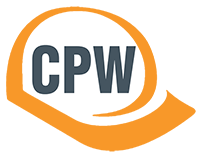Executive Order 13706 applies to new contracts and replacements for expiring contracts with the Federal Government that result from solicitations issued on or after January 1, 2017. It applies to four major categories of contractual agreements:
(1) procurement contracts for construction covered by the Davis-Bacon Act (DBA);
(2) service contracts covered by the McNamara-O’Hara Service Contract Act (SCA);
(3) concessions contracts, including any concessions contracts excluded from the SCA by the Department of Labor’s regulations at 29 CFR 4.133(b); and
(4) contracts in connection with Federal property or lands and related to offering services for Federal employees, their dependents, or the general public.
The Executive Order does not apply, however, to contracts that are subject only to the Davis-Bacon Related Acts, i.e., Acts under which Federal agencies provide financial and other assistance to construction projects through grants, loans, guarantees, insurance and other methods, but do not directly procure construction services.
The Final Rule contains certain narrow exclusions from coverage for the following types of contractual agreements:
(1) grants;
(2) contracts and agreements with and grants to Indian Tribes under Public Law 93-638, as amended;
(3) any procurement contracts for construction that are not subject to the DBA (i.e., procurement contracts for construction under $2,000); and
(4) any contracts for services, except for those otherwise expressly covered by the Final Rule, that are exempted from coverage under the SCA or its implementing regulations.
The Final Rule also provides that the Executive Order does not apply to contracts for the manufacturing or furnishing of materials, supplies, articles, or equipment to the Federal Government, including those subject to the Walsh-Healey Public Contracts Act.
The Final Rule includes a narrow exemption from the rule’s accrual requirements for employees who perform work duties necessary to the performance of a covered contract (but who are not directly engaged in performing the specific work called for by the contract) and who spend less than 20 percent of their hours worked in a particular work week performing work in connection with such contracts.
- The Final Rule also creates an option for contractors to provide an employee with at least 56 hours of paid sick leave at the beginning of each accrual year rather than allowing the employee to accrue leave based on hours worked.
- Accrual is calculated, and employees are to be notified in writing of the amount of paid sick leave they have available, at the end of each pay period or each month, whichever interval is shorter.
Carryover
The Final Rule provides that contractors may limit the amount of paid sick leave employees may accrue to 56 hours each year and must permit employees to carry over accrued, unused paid sick leave from one year to the next.
The Final Rule also allows contractors to limit the amount of paid sick leave employees have accrued to 56 hours at any point in time.
Furthermore, contractors are required to reinstate employees accrued, unused paid sick leave if the employees are rehired by the same contractor within 12 months after a job separation unless contractors provide payment to employees for accrued, unused paid sick leave upon separation.
Contractors are not required to pay employees for accrued, unused paid sick leave at the time of a job separation (“cash-out”); however, if they do provide cash-out, they will not be required to reinstate unused leave.
You cannot use the fringe component to satisfy sick pay funding.
You can use PTO to satisfy sick pay so long as it provides the same rights and benefits as the Final Rule requires (even if the employee uses all the time for vacation).
Posting Requirements
Most employers are required to post notices in prominent and accessible locations at a worksite that detail worker protections afforded by various workplace laws (e.g. minimum wage, overtime, safety and health). These posters are often in a break room, in the supervisor’s trailer on a construction site, on a bulletin board outside, in the employee handbook, or on the employer’s internal website. Employers covered by the paid sick leave rules must post this poster: https://www.dol.gov/whd/regs/compliance/wh1090.pdf.
If you have questions about the Executive Order, please contact the consultants at CPWIS for assistance!

